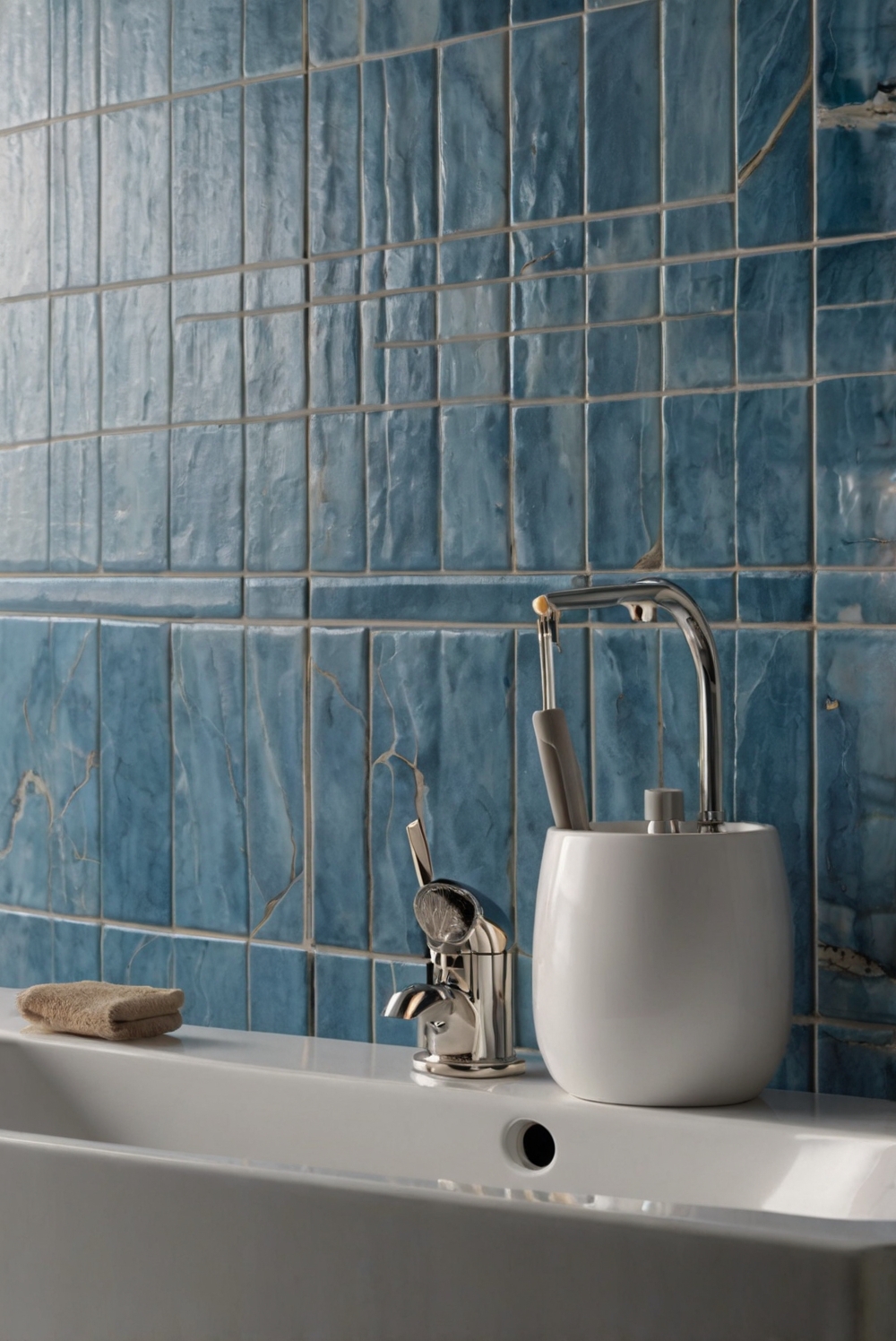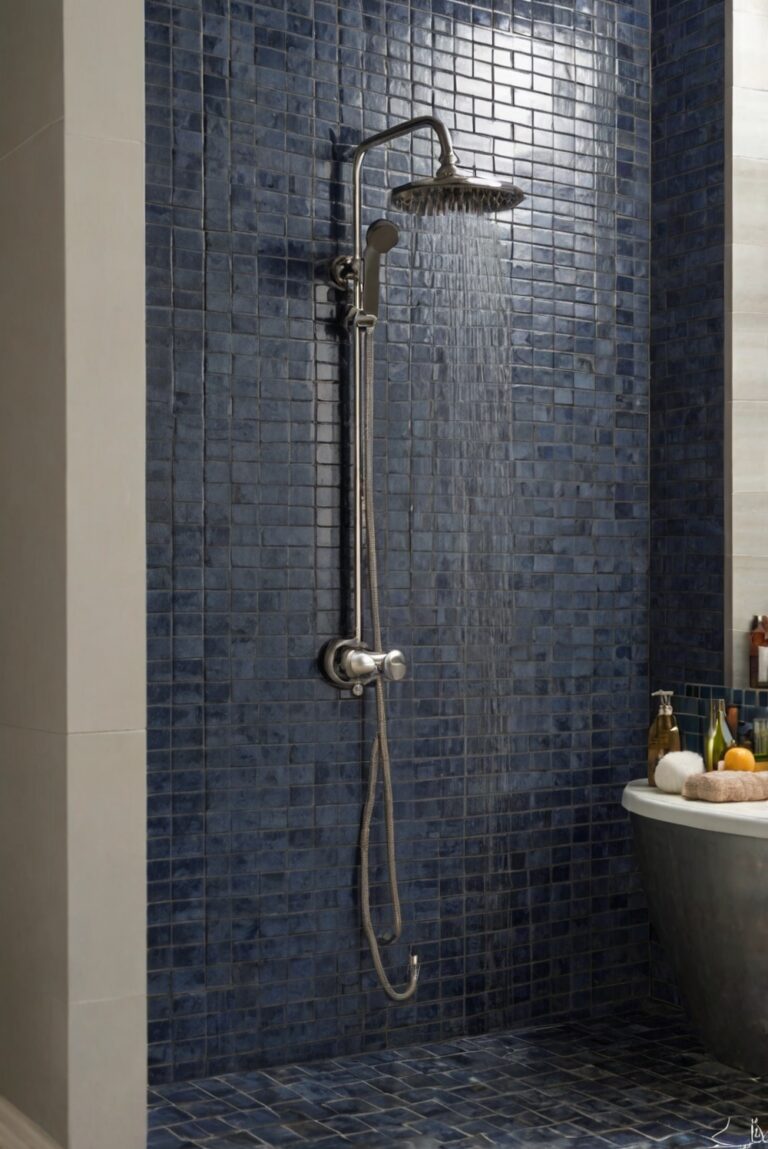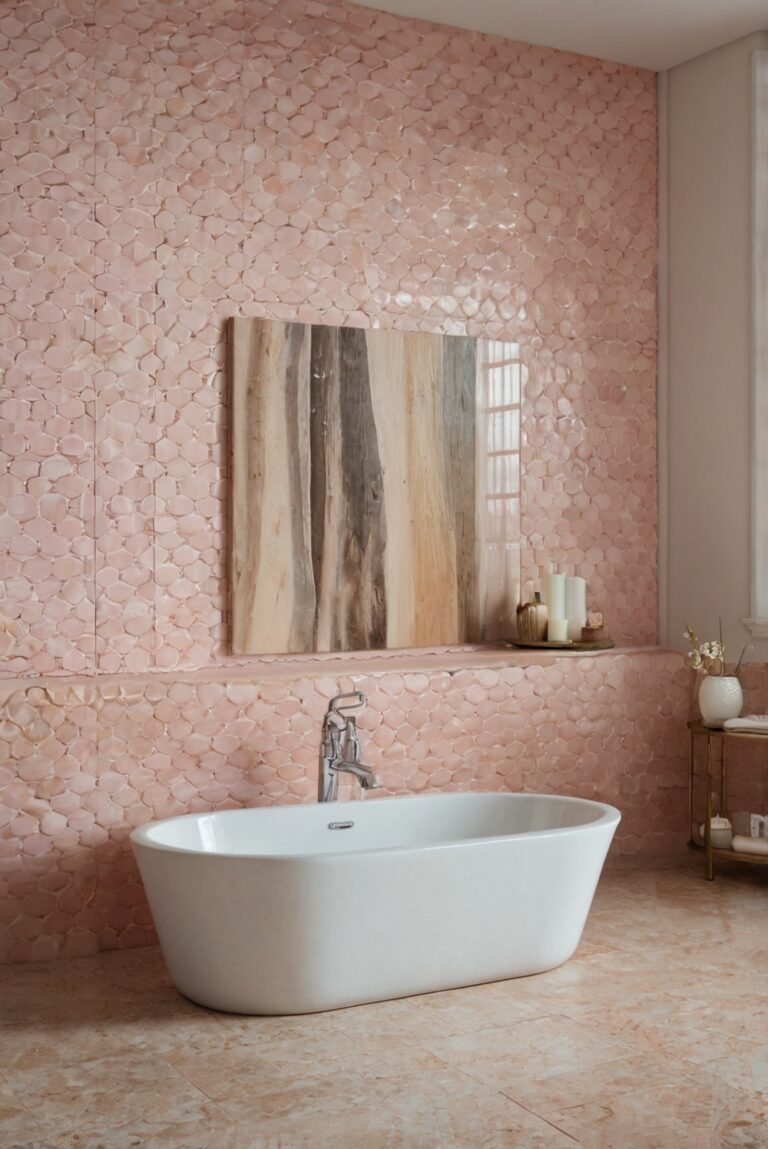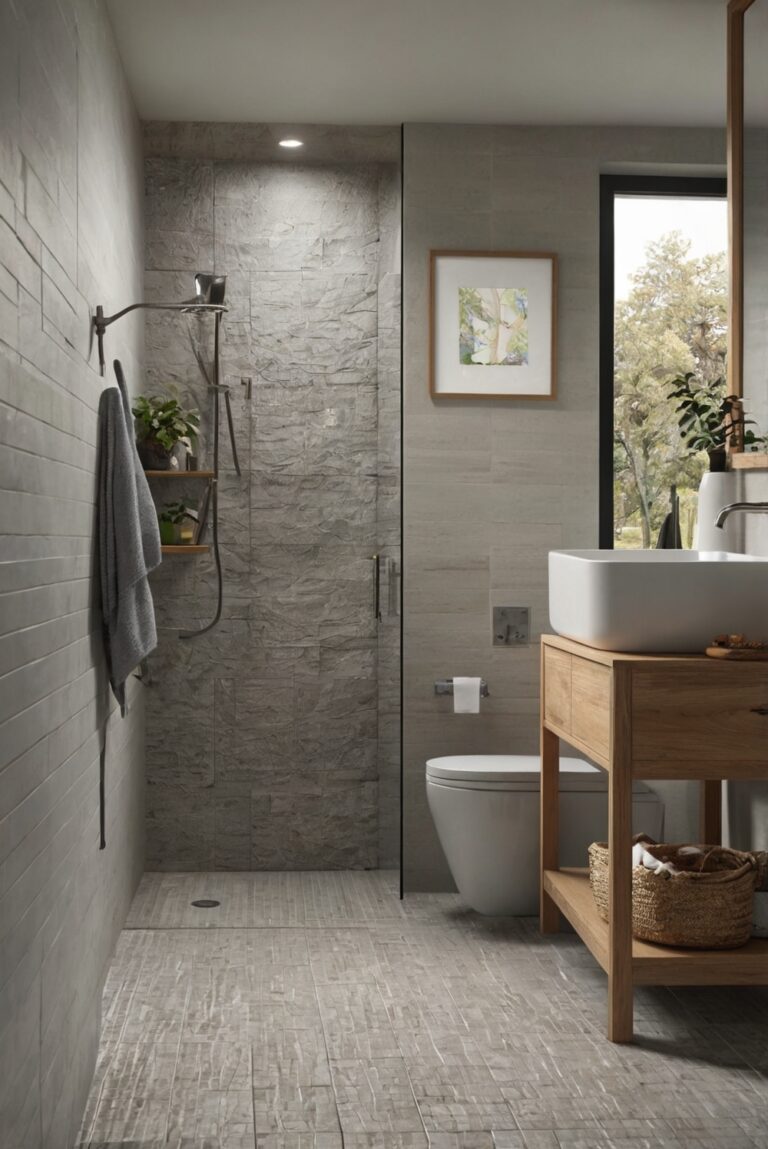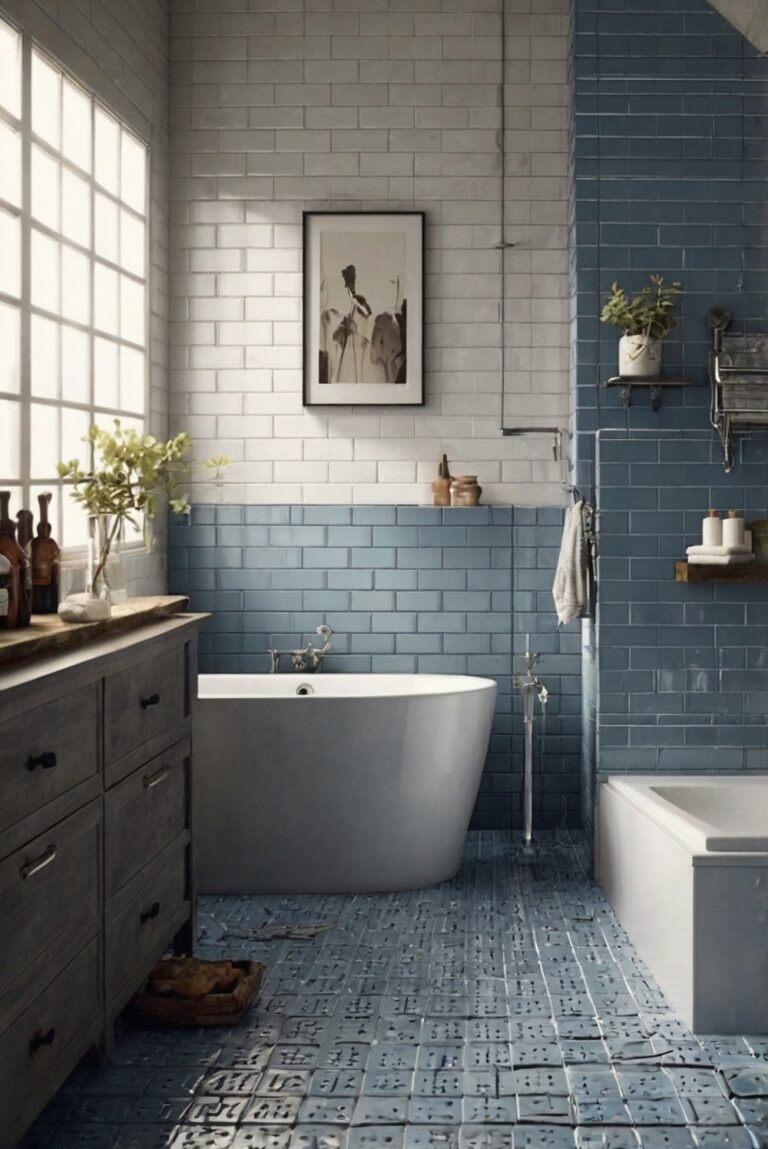Explore the essential debate of ceramic versus porcelain tiles and discover the best option for your bathroom design needs. Dive into the pros and cons with us.
**What are the pros and cons of using ceramic vs. porcelain tiles in the bathroom?**
Ceramic tiles are a popular choice for bathroom flooring due to their durability and water-resistance. They come in various colors and patterns, making them versatile for different design styles. Porcelain tiles, on the other hand, are more durable and resistant to moisture, making them suitable for high-traffic areas. However, porcelain tiles can be more expensive than ceramic tiles.
When choosing between ceramic and porcelain tiles for your bathroom, consider the level of foot traffic and moisture exposure. Ceramic tiles are easier to install and maintain, but porcelain tiles offer better long-term durability. Take into account your budget and desired design aesthetic to make the best choice for your bathroom space.
—
– home decorating
– home interior
– home interior design
– home decor interior design
– space planning
– interior design space planning
– decorating interiors
– interior bedroom design
– designers kitchen
– kitchen designs
– living room interior
– designer wall paint
– primer paint for walls
– color matching painting
– paint color match
– home paint colors
Pros and Cons of Ceramic vs. Porcelain Tiles in the Bathroom:
Pros of Ceramic Tiles:
Ceramic tiles are a popular choice for bathroom floors and walls due to their durability and versatility. These tiles are made from clay that is kiln-fired at high temperatures, making them tough and resistant to wear and tear. One of the main advantages of ceramic tiles is their affordability. They are generally more budget-friendly compared to porcelain tiles, making them a cost-effective option for bathroom renovations. Ceramic tiles also come in a wide range of colors, patterns, and sizes, allowing for endless design possibilities in the bathroom. Additionally, ceramic tiles are easy to clean and maintain, making them a practical choice for busy households.
Cons of Ceramic Tiles:
While ceramic tiles have many advantages, they also have some drawbacks. One of the main disadvantages of ceramic tiles is their porosity. Since ceramic tiles are not as dense as porcelain tiles, they are more prone to absorbing water and stains. This can lead to discoloration over time if not properly sealed and maintained. Another downside of ceramic tiles is their durability. While they are durable, they are not as strong as porcelain tiles and may be more susceptible to chipping or cracking, especially in high-traffic areas of the bathroom.
Pros of Porcelain Tiles:
Porcelain tiles are known for their strength and durability, making them an ideal choice for high-traffic areas like the bathroom. These tiles are made from a finer clay that is fired at higher temperatures than ceramic tiles, resulting in a denser and harder material. One of the main advantages of porcelain tiles is their water resistance. Porcelain tiles are impervious to water, making them ideal for wet areas like bathrooms. They are also highly stain-resistant and easy to clean, making them a low-maintenance option for busy households. Additionally, porcelain tiles are extremely durable and long-lasting, making them a worthwhile investment for your bathroom.
Cons of Porcelain Tiles:
Despite their many benefits, porcelain tiles also have some drawbacks. One of the main disadvantages of porcelain tiles is their cost. Porcelain tiles are generally more expensive than ceramic tiles, which can make them less budget-friendly for some homeowners. Another downside of porcelain tiles is their hardness. While their strength is an advantage, it can also be a disadvantage in terms of comfort. Porcelain tiles are harder and colder underfoot compared to ceramic tiles, which may not be as comfortable, especially in colder climates. Additionally, the installation of porcelain tiles can be more challenging and may require professional help, adding to the overall cost of the project.
Conclusion:
When choosing between ceramic and porcelain tiles for your bathroom, it is essential to consider the specific needs and preferences of your space. Ceramic tiles are a cost-effective and versatile option, ideal for those on a budget who prioritize design flexibility. On the other hand, porcelain tiles offer unparalleled durability and water resistance, making them a long-term investment for high-traffic bathrooms. Ultimately, the decision between ceramic and porcelain tiles comes down to your budget, style preferences, and maintenance requirements. By weighing the pros and cons of each type of tile, you can make an informed decision that will enhance the functionality and aesthetics of your bathroom for years to come.
1. Which is better for bathroom floors, ceramic or porcelain tiles?
Both ceramic and porcelain tiles are suitable for bathroom floors, but porcelain tiles are generally more durable and less prone to staining. Porcelain tiles have a lower water absorption rate, making them ideal for wet areas like bathrooms. However, ceramic tiles are more affordable and come in a wider range of colors and styles. Ultimately, the choice between ceramic and porcelain tiles for bathroom floors depends on your budget, design preferences, and how much foot traffic the area receives.
2. Are ceramic or porcelain tiles easier to maintain in the bathroom?
Porcelain tiles are generally easier to maintain in the bathroom because they are more stain-resistant and require less frequent cleaning. Porcelain tiles are also less likely to chip or scratch compared to ceramic tiles. However, both types of tiles require regular cleaning and sealing to maintain their appearance and prevent mold and mildew growth in the bathroom. When choosing between ceramic and porcelain tiles for your bathroom, consider the amount of time and effort you are willing to invest in maintenance.
3. Which type of tile is more resistant to water damage, ceramic or porcelain?
Porcelain tiles are more resistant to water damage compared to ceramic tiles, making them a better choice for bathrooms and other wet areas. Porcelain tiles have a lower water absorption rate, which means they are less likely to absorb moisture and swell or warp over time. Ceramic tiles, on the other hand, can absorb more water, making them more susceptible to water damage and mold growth in humid environments like bathrooms. If water resistance is a priority for your bathroom, opt for porcelain tiles for long-lasting durability.
4. Do ceramic or porcelain tiles offer better slip resistance in the bathroom?
Both ceramic and porcelain tiles can be manufactured with slip-resistant finishes to improve traction in the bathroom. However, porcelain tiles are generally considered more slip-resistant than ceramic tiles due to their denser and less porous nature. When selecting tiles for bathroom floors or shower areas, look for a textured or matte finish that provides added grip to reduce the risk of slipping, especially when the floor is wet. Prioritize safety by choosing slip-resistant ceramic or porcelain tiles for your bathroom to prevent accidents and injuries.
5. Which type of tile is more eco-friendly, ceramic or porcelain?
Ceramic tiles are typically more eco-friendly than porcelain tiles due to their lower energy consumption during the manufacturing process. Ceramic tiles are fired at lower temperatures, reducing greenhouse gas emissions and energy consumption compared to the higher firing temperatures required for porcelain tiles. Additionally, ceramic tiles can be made from recycled materials and are recyclable at the end of their lifespan, making them a sustainable choice for environmentally conscious homeowners. Consider the environmental impact of ceramic and porcelain tiles when selecting materials for your bathroom renovation to minimize your carbon footprint and support eco-friendly practices.

